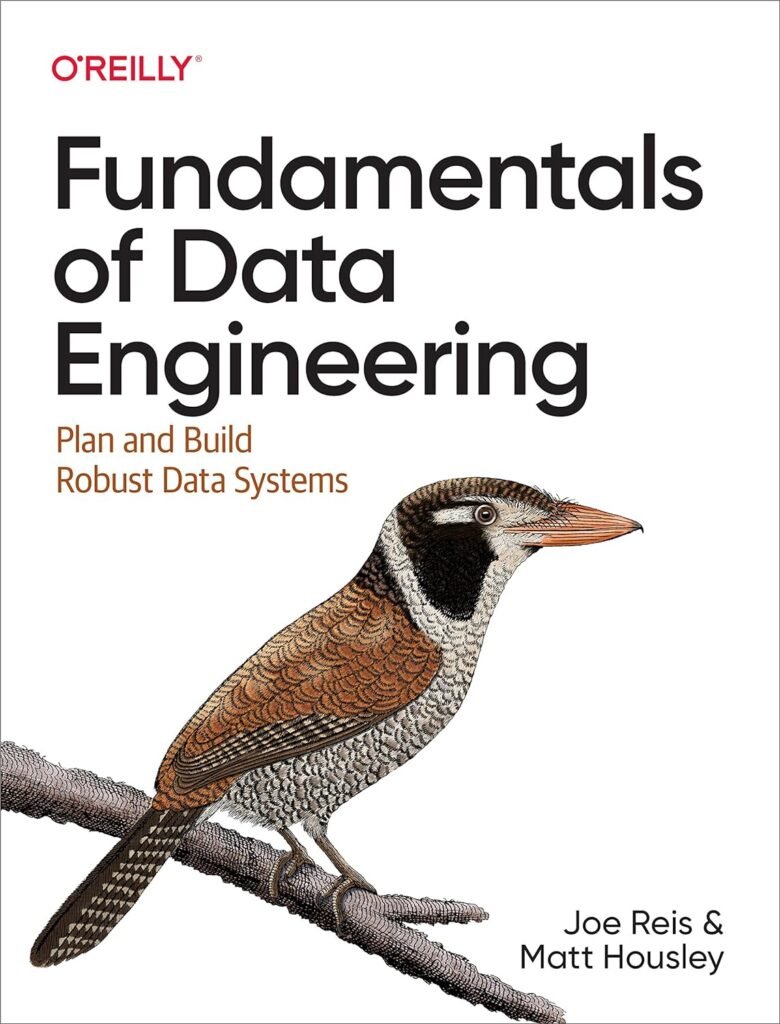Fundamentals of Data Engineering: A Comprehensive Review
Join our weekly newsletters for the latest updates and exclusive content on industry-leading AI, InfoSec, Technology, Psychology, and Literature coverage. Learn More
Introduction to Data Engineering

Data engineering is a critical component in the modern, data-driven landscape, playing a vital role in how organizations collect, process, and analyze information. This field has evolved significantly over the last decade, adapting to advancements in technology and the increasing demand for data-driven decision-making. It serves as a bridge between raw data and actionable insights, allowing organizations to harness the power of data effectively.
The evolution of data engineering has brought about distinct roles within the field, primarily occupied by software engineers, data scientists, and analysts. Software engineers focus on designing and implementing systems for data storage and processing, ensuring that infrastructure is robust and scalable. Meanwhile, data scientists leverage statistical techniques and machine learning algorithms to extract insights from the data, often working closely with data engineers to ensure that the data pipelines are both efficient and effective. Analysts, on the other hand, delve into the data to uncover trends and patterns, playing a crucial role in decision-making processes.
Understanding the fundamentals of data engineering is essential for professionals aspiring to contribute to this domain. With the complex nature of data management, a comprehensive grasp of data engineering practices is indispensable. Key themes addressed in Joe Reis and Matt Housley’s book, “Fundamentals of Data Engineering,” include the data engineering lifecycle, which encompasses data ingestion, transformation, storage, and analysis. Each stage is integral to ensuring the integrity and usability of data, as well as delivering value to the organization. By familiarizing oneself with these concepts, practitioners can effectively navigate the multifaceted landscape of data engineering and contribute to their organizations’ success in an ever-evolving digital era.
Overview of the Data Engineering Lifecycle
The data engineering lifecycle is a crucial framework that outlines the various phases involved in managing and utilizing data effectively within an organization. As articulated by Joe Reis and Matt Housley in their comprehensive review, the lifecycle comprises several integral phases: data generation, ingestion, orchestration, transformation, storage, and governance. Understanding each of these phases is vital for any organization seeking to maximize the value derived from their data assets.
The first phase, data generation, refers to the creation of data through various sources such as user interactions, sensors, and external data feeds. This initial phase sets the stage for all subsequent activities and underscores the importance of capturing accurate and relevant data. Organizations should establish best practices to ensure that data generation is consistent and reliable, employing methods such as automated data capture to minimize errors.
Following generation, the data ingestion phase involves the process of importing data into a centralized system for analysis. It is critical to select appropriate ingestion tools that can handle diverse data formats and provide real-time capabilities as needed. This selection process can have a significant impact on the efficiency of data workflows, making the evaluation of technology choices essential.
The orchestration phase then coordinates the various data processes, enabling seamless integration and flow of data between systems. Tools for orchestration can automate workflows, which not only saves time but also reduces the likelihood of human error. Next is the transformation phase, where raw data is cleaned and processed into a usable format. This phase is vital for ensuring data quality and relevance.
Data storage subsequently provides an efficient repository for processed data, and careful consideration should be given to storage options based on accessibility and scalability. The final phase, data governance, focuses on ensuring data security, compliance, and quality management throughout the entire lifecycle. Implementing comprehensive governance frameworks protects organizational data and enhances its value. Understanding the significance of each phase equips organizations to implement effective data engineering practices aligned with best practices and technology suitability.
Practical Applications of Data Engineering Principles
Data engineering principles are essential for addressing the challenges faced by organizations in managing and utilizing their data assets effectively. In real-world applications, these principles serve as the foundation for developing solutions that streamline data processes and improve decision-making. For instance, consider a retail company facing issues with inventory management. By applying data engineering frameworks, the organization can implement a data pipeline that systematically collects real-time sales data, inventory levels, and customer behavior metrics. This integrated approach allows for forecasting demand more accurately, ultimately reducing excess inventory and improving cash flow.
An illustrative case study involves a financial services firm leveraging data engineering to enhance risk assessment models. The firm employed cloud technologies, such as Amazon Web Services and Google Cloud Platform, to create a robust data architecture that aggregates data from multiple sources, including transaction records and external financial data. By applying principles of data cleansing and transformation, the organization improved the quality and usability of the data. This enabled data scientists to build more precise models to assess credit risk, ensuring that the institution can make informed lending decisions while minimizing potential defaults.
Another hypothetical scenario could involve a healthcare provider facing challenges with patient data integration and analysis. By utilizing data engineering methodologies, the provider can establish a centralized data platform that consolidates electronic health records, lab results, and treatment histories. This setup can be achieved using cloud services like Microsoft Azure or Snowflake, which offer flexibility and scalability. The result is a comprehensive view of patient data that facilitates improved patient outcomes and operational efficiencies.
These examples underscore the versatility of data engineering principles in addressing a wide range of industry-specific challenges. By integrating various cloud technologies, organizations can tailor their data architecture to meet unique needs, ultimately enhancing their overall performance and competitiveness in the market.
Conclusion and Key Takeaways
The first edition of “Fundamentals of Data Engineering” by Joe Reis and Matt Housley offers a profound understanding of the essential practices that underpin successful data engineering. One of the vital strategies emphasized throughout the book is the importance of establishing a structured approach to data workflows and processes. This systematic framework enables organizations to efficiently manage vast amounts of data, ensuring that data is not only collected but also transformed and stored in a manner that supports effective analysis and decision-making.
Readers are encouraged to reflect on the diverse frameworks shared within the review, which cover a variety of methodologies ranging from data modeling to ETL (Extract, Transform, Load) processes. Each topic is intricately connected, illustrating the necessity of a comprehensive strategy in building a robust data architecture. By adopting these frameworks, data professionals can significantly enhance their initiatives, thereby providing greater value to their organizations while improving their own technical capacity.
Moreover, the book underscores that data engineering is not a static field; it is dynamic, requiring practitioners to stay informed about emerging tools and technologies. Continuous learning and adaptation are pivotal in keeping pace with advancements in data engineering. As the data landscape evolves, so too must the strategies and skills of data engineers. Readers are thus encouraged to engage in lifelong learning, whether through formal education, online resources, or community involvement. By embracing this mindset, data professionals can better prepare themselves to tackle the complexities presented by modern data challenges.
Ultimately, the insights gleaned from “Fundamentals of Data Engineering” serve as a valuable guide for both novices and seasoned practitioners aiming to enhance their understanding of data processes, advocacy of best practices, and commitment to ongoing development within this essential domain.
Discover more at InnoVirtuoso.com
I would love some feedback on my writing so if you have any, please don’t hesitate to leave a comment around here or in any platforms that is convenient for you.
For more on tech and other topics, explore InnoVirtuoso.com anytime. Subscribe to my newsletter and join our growing community—we’ll create something magical together. I promise, it’ll never be boring! 🙂
Stay updated with the latest news—subscribe to our newsletter today!
Thank you all—wishing you an amazing day ahead!







